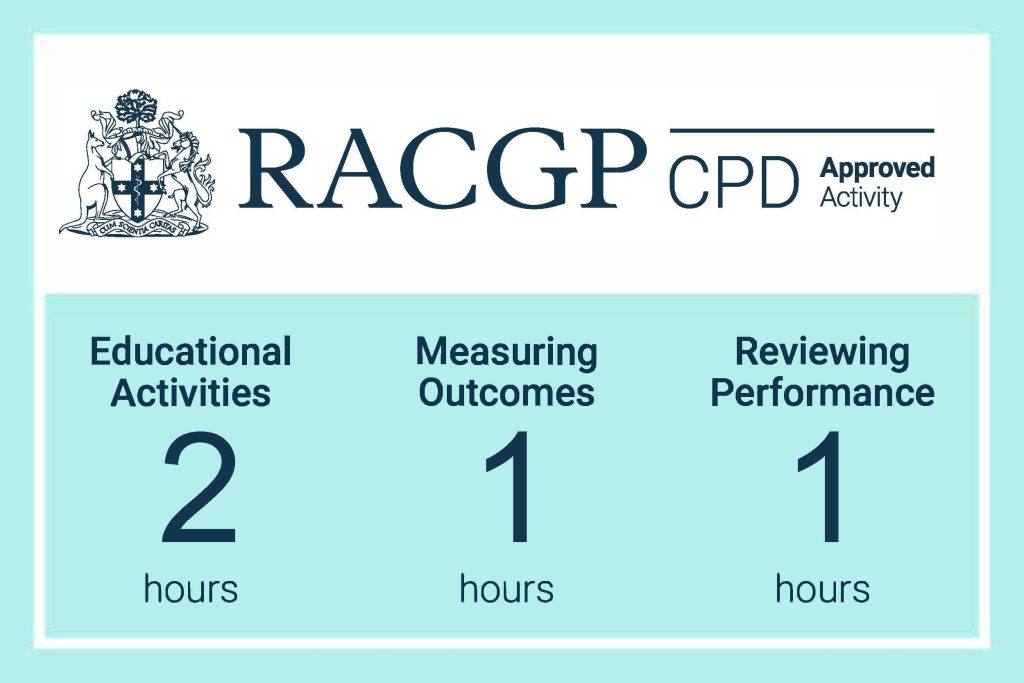Articles / Preconception metabolic health – the consult with lifetime benefits

0 hours
These are activities that expand general practice knowledge, skills and attitudes, related to your scope of practice.
0.5 hours
These are activities that require reflection on feedback about your work.
0 hours
These are activities that use your work data to ensure quality results.
These are activities that expand general practice knowledge, skills and attitudes, related to your scope of practice.
These are activities that require reflection on feedback about your work.
These are activities that use your work data to ensure quality results.
Estimates indicate about half of Australian women are overweight or obese when they fall pregnant, resulting in various risks for themselves and their babies. GPs can help women get in good metabolic shape before they conceive—with benefits that last a lifetime, says academic gynaecologist Kirsten Black, Professor of Sexual and Reproductive Health at the University of Sydney.
It’s important to invest in preconception health because research shows making changes during pregnancy itself is “too little too late”, Professor Black says.
“Trials have found that health and lifestyle interventions instituted in pregnancy don’t have a huge impact on neonatal outcomes,” she says, citing blood glucose control as a prime example.
The target for preconception is hbA1c below 6.5%, she says, noting that the risk of congenital abnormalities including cardiac defects rises exponentially with hbA1c levels.
“We know the haemoglobin A1c around the time of conception is key in terms of neonatal outcomes.”
“So blood glucose control during pregnancy is really important, but actually around the time of conception is crucial.”
Obesity has multiple impacts on obstetric outcomes, Professor Black says.
“In early pregnancy there’s an increased risk of recurrent miscarriage, spina bifida, hydrocephaly, cleft lip and cardiovascular anomalies. In late pregnancy obesity predisposes to maternal diabetes and hypertension, preeclampsia and thromboembolism.”
“Around the time of delivery there are anaesthetic complications for the mother, but there are also complications for the neonate, including shoulder dystocia and macrosomia.”
“And if the child is born macrosomic, then they’re more likely to grow into a child with overweight or obesity and an adult with overweight or obesity. And the cycle continues,” Professor Black says.
“So essentially if maternal health and weight before conception is optimised, then you’re less likely to have complications.”
One Canadian population-based cohort study of 226,958 documented the relationships between prepregnancy body mass index (BMI) and adverse pregnancy outcomes. The study found increased pre-pregnancy BMI was associated with increased absolute risk of many important obstetric outcomes, including preeclampsia, gestational diabetes, indicated preterm delivery, macrosomia, shoulder dystocia, caesarean delivery, stillbirth, neonatal stay in the neonatal intensive care unit of >48 hours, and in-hospital newborn mortality.
“At the other extreme, if there’s undernutrition, you can prevent underweight and stunting if you improve maternal health and normalise weight before pregnancy,” Professor Black says.
If the intrauterine environment programs the fetus for survival in an adverse environment, the structure of developing organs and energy homeostasis changes, she explains.
“If a child is then born into a world of abundant postnatal nutrient options this leads to obesity, insulin resistance, cancer, cardiovascular disease and renal disease,” she says, noting the timing of maternal calorie deprivation is linked to outcomes—as shown in the Dutch hunger studies.
“If the mother was deprived of calories in early pregnancy, then the offspring were found more likely to experience glucose intolerance, cardiovascular disease, breast cancer and stress responsiveness and depression,” she says. “If the nutrient depletion occurred in the mid part of pregnancy, then the offspring were more likely to develop glucose intolerance, obstructive airways disease and microalbuminuria. In late pregnancy it was glucose intolerance.”
This depends on the concern.
“If there’s a maternal weight issue, you might need a 12-month run-in to optimise your weight and nutrition,” Professor Black says.
“For things like stopping smoking and alcohol, that should ideally be at least three months before.”
Folic acid should be taken three months before and during the first three months of pregnancy—and women with some pre-existing health conditions need a higher dose.
The normal dose is 0.4 to 0.5 milligrams, Professor Black says. However, women with pre-pregnancy diabetes, a previous child with or a family history of neural tube defects, a BMI over 30, or those taking anticonvulsant medication for epilepsy need five milligrams of folic acid per day.
Iodine is critical from the start of embryonic development because maternal thyroid hormones are vital for nerve cell growth and formation, she adds, but most pregnant and breastfeeding women don’t get enough from diet alone. For that reason iodine supplementation of 150 micrograms per day is recommended three months before conception and during pregnancy and breastfeeding.
Newly published research found Australians were eager to learn about preparing for pregnancy, and that primary care providers were a trusted information source.
A good way to broach the topic is to ask women if they’d like to become pregnant in the next 12 months, which you can do during any consultation, Professor Black says.
If they say no, and are sexually active in a heterosexual relationship, you can talk about using reliable contraception. “And if they say yes, then you would counsel them about how they could optimise weight, diet, smoking, alcohol, and take folic acid.”
It’s a good idea to ask women about their plans at postpartum visits too, she adds, because women tend to be less likely to plan their pregnancies as parity increases.
“When we look at our data from a multicultural, inner metropolitan hospital, we found that only about a third of women having their fourth child really planned the pregnancy.”
Professor Black stresses the need to discuss contraception with women who don’t want another pregnancy.
“It’s important that women understand their susceptibility to pregnancy is very high in those first 12 months postpartum, particularly if they’re not breastfeeding,” she explains.
“And if they do want another pregnancy, then they need to start folic acid et cetera.”
It’s also a good opportunity to talk about birth spacing, she says.
“It’s important for maternal health, neonatal health, and also family and financial and emotional health to space pregnancies.”
Evidence suggests falling pregnant again too quickly can increase the next baby’s risk of being small for gestational age, particularly if the interpregnancy period is “really short, like if someone has a baby and then they get pregnant again within six months,” Professor Black says.
“The World Health Organization recommends that women have at least 18 months between pregnancies to allow the body to adjust and rebuild.”
More information:
Preconception Health Network | Resources, news and community for people interested in best-practice preconception health promotion and care.
Based on this educational activity, complete these learning modules to gain additional CPD.

Multiple Sclerosis vs Antibody Disease – What GPs Need to Know

Using SGLT2 to Reduce Cardiovascular Death in T2D – Important Updates for GPs

Menopause and MHT: Maximising Benefits & Minimising Risks

Peripheral Arterial Disease


Yes
No
Listen to expert interviews.
Click to open in a new tab
Browse the latest articles from Healthed.
Once you confirm you’ve read this article you can complete a Patient Case Review to earn 0.5 hours CPD in the Reviewing Performance (RP) category.
Select ‘Confirm & learn‘ when you have read this article in its entirety and you will be taken to begin your Patient Case Review.
Menopause and MHT
Multiple sclerosis vs antibody disease
Using SGLT2 to reduce cardiovascular death in T2D
Peripheral arterial disease
